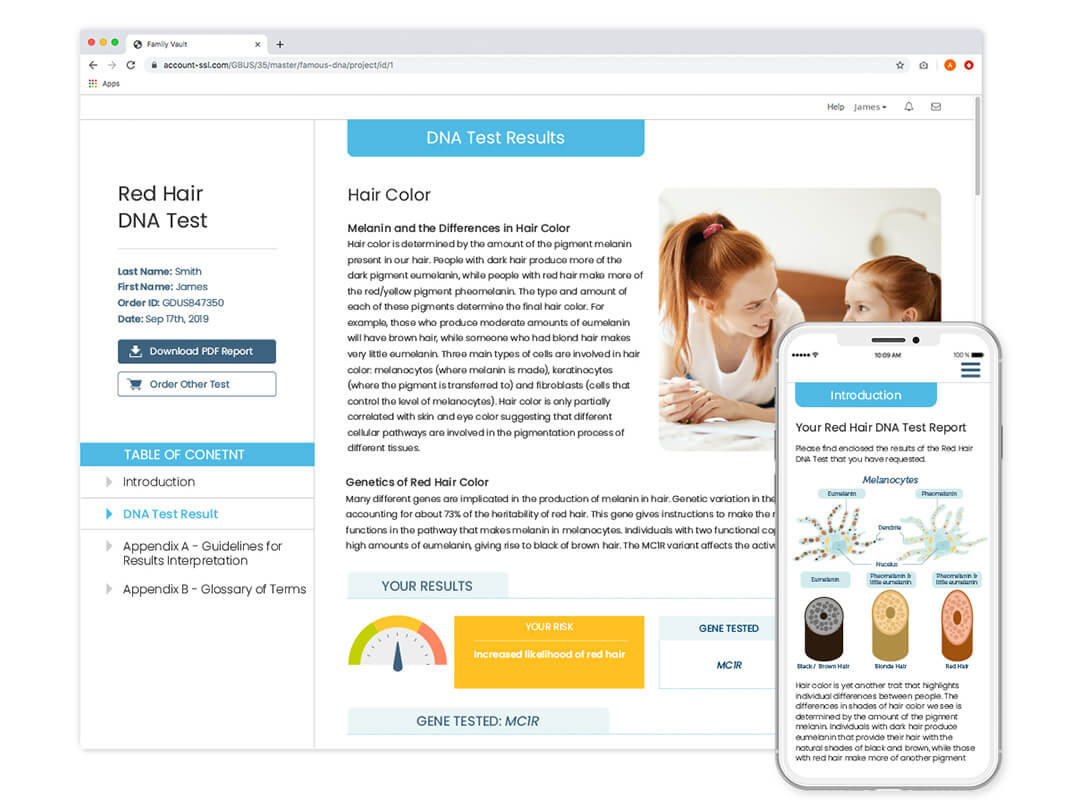Red Hair DNA Test
Discover the link between genetic variants and red hair with this DNA test.
- Includes variants of the MC1R gene linked to red hair
- Individuals with these variants are more likely to have red hair
- 100% private and confidential online results
Already have DNA markers? Sign in and upload your data to view results.
Need to take the DNA Test? Order our easy-to-use swab kit.





